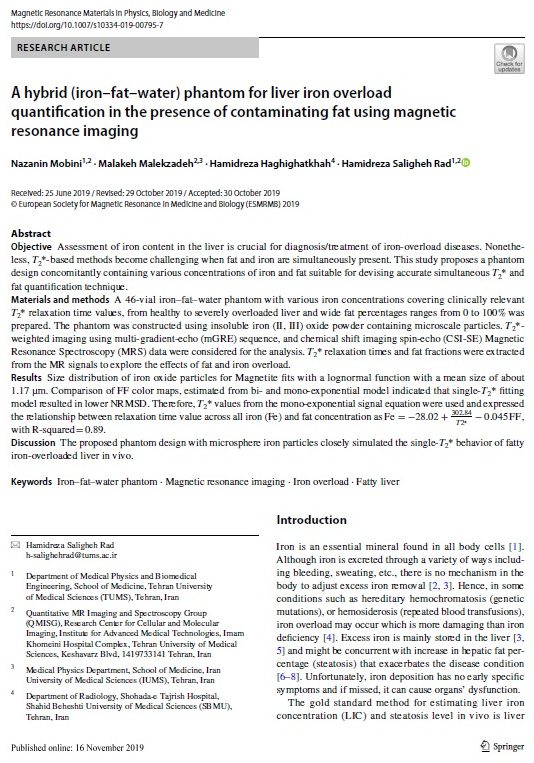A hybrid (iron–fat–water) phantom for liver iron overload quantification in the presence of contaminating fat using magnetic resonance imaging
Abstract
OBJECTIVE:
Assessment of iron content in the liver is crucial for diagnosis/treatment of iron-overload diseases. Nonetheless, T2*-based methods become challenging when fat and iron are simultaneously present. This study proposes a phantom design concomitantly containing various concentrations of iron and fat suitable for devising accurate simultaneous T2* and fat quantification technique.
MATERIALS AND METHODS: A 46-vial iron-fat-water phantom with various iron concentrations covering clinically relevant T2* relaxation time values, from healthy to severely overloaded liver and wide fat percentages ranges from 0 to 100% was prepared. The phantom was constructed using insoluble iron (II, III) oxide powder containing microscale particles. T2*-weighted imaging using multi-gradient-echo (mGRE) sequence, and chemical shift imaging spin-echo (CSI-SE) Magnetic Resonance Spectroscopy (MRS) data were considered for the analysis. T2* relaxation times and fat fractions were extracted from the MR signals to explore the effects of fat and iron overload.
RESULTS: Size distribution of iron oxide particles for Magnetite fits with a lognormal function with a mean size of about 1.17 µm. Comparison of FF color maps, estimated from bi- and mono-exponential model indicated that single-T2* fitting model resulted in lower NRMSD. Therefore, T2* values from the mono-exponential signal equation were used and expressed the relationship between relaxation time value across all iron (Fe) and fat concentration as [Formula: see text], with R-squared = 0.89.
DISCUSSION: The proposed phantom design with microsphere iron particles closely simulated the single-T2* behavior of fatty iron-overloaded liver in vivo.

